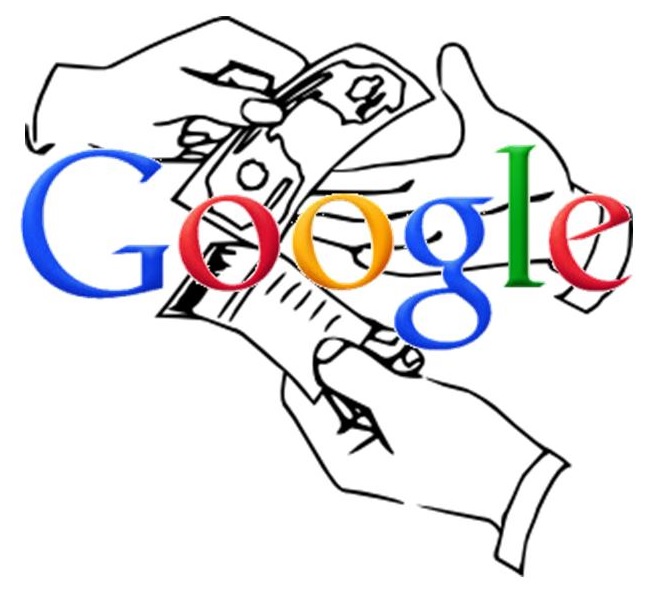The search engine giant has now purchased a portfolio that had previously been owned by Foxconn.
Google has just announced that it has purchased the augmented reality display patent portfolio from Hon Hai Precision Industry at Foxconn, as the search engine giant continues to drive forward in its development of its Google Glass technology.
Hon Hai is currently a major supplier for leading IT brands around the world, including Apple.
It has now sold a portfolio of different head mounted display (HMD) augmented reality and other patents, according to its own news release. The technology involved in the patent portfolio is directly related to the way that the computer generated AR images are superimposed over the view of the real world, said the release. The technique is used in everything from gaming and video devices to tactical displays and aviation, and even simulation and training tools.
The augmented reality patents in the portfolio are directly connected to the type of tech used by Google Glass.
 Other than this, very few other details regarding this augmented reality patent deal have been released. A spokesperson from Google has declined to make any additional comments regarding the purchase that was made. Neither Hon Hai, nor the company that facilitated the sale, MiiCs & Partners, was available for immediate response to press requests for a comment.
Other than this, very few other details regarding this augmented reality patent deal have been released. A spokesperson from Google has declined to make any additional comments regarding the purchase that was made. Neither Hon Hai, nor the company that facilitated the sale, MiiCs & Partners, was available for immediate response to press requests for a comment.
This could be an important addition to the work that Google has been putting into the release of its augmented reality Google Glass product. That wearable device features a head mounted display and is currently available only to a small group of specifically selected testers and a limited group of developers.
This latest augmented reality investment isn’t the only one that Google has made recently. In July, Google invested in a chip maker from Taiwan that manufactures the AR glasses components. It also stated that it would purchase shares in order to obtain an interest worth 6.3 percent of Himax Display, which is a Himax Technologies subsidiary. This investment is geared toward expanding the capacity available at Himax, as well as funding production upgrades. It is that company that produces the Google Glass liquid crystal on silicon chips.
The auto manufacturer’s A3 now has a new mobile friendly guide for more convenient support.
Audi has just announced the release of its A3 eKurzinfo app that allows owners to use the power of augmented reality in order to obtain more information about their vehicles for maintenance, repairs, and an overall understanding of its features.
The app makes certain that a convenient copy of the owner’s manual is always available.
The augmented reality services makes it possible for drivers and passengers to avoid having to dig through the glove compartment and try to figure out where the information they require can be found within the grease dabbed print copy of the manual. Instead, a smartphone or tablet can be used along with the app to gain all of the information needed about a certain vehicle feature, or even about a light that has been illuminated on the dash display.
The app uses an augmented reality OBD2 scanner to identify over 300 elements of the vehicle.
While this service is not meant for making a diagnosis of a problem with the vehicle, it can help to identify over 300 different parts of the car and provide information about them. This is further supported with maintenance and how-to information.
The application was developed by Mataio, an augmented reality software company. It was created for Audi AG and uses both 2D and 3D tracking technology to allow the eKurzinfo app to provide a user with information about various parts of the car. To use it, the app needs to be opened, and then the smartphone or tablet camera must be aimed at the part of the vehicle to be identified or about which more information is needed.
The information provided by this augmented reality experience is designed to mirror what is available in the printed version of the manual. However, the benefit is that the application is designed to identify the applicable part on its own, which could considerably reduce the amount of reading and searching that could otherwise be required in order to pinpoint exactly what a part or issue could be. Moreover, the supporting information such as maintenance information helps to save the vehicle owner from having to Google it after having found out what it is, as it will already be provided.
 Other than this, very few other details regarding this augmented reality patent deal have been released. A spokesperson from Google has declined to make any additional comments regarding the purchase that was made. Neither Hon Hai, nor the company that facilitated the sale, MiiCs & Partners, was available for immediate response to press requests for a comment.
Other than this, very few other details regarding this augmented reality patent deal have been released. A spokesperson from Google has declined to make any additional comments regarding the purchase that was made. Neither Hon Hai, nor the company that facilitated the sale, MiiCs & Partners, was available for immediate response to press requests for a comment.
